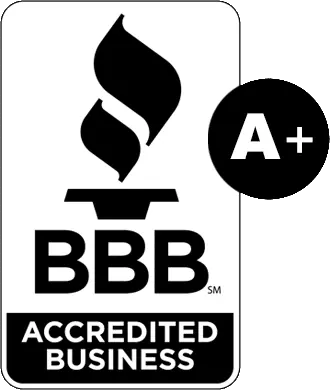
In recent years, the collective consciousness around environmental preservation has soared, leading to a critical reassessment of our daily practices and the materials we rely upon. Amongst the myriad considerations for a greener planet, the concept of eco-friendly packing has emerged as a significant player. Traditional packing materials, while convenient, have cast long shadows of carbon footprints and environmental degradation. The pivot towards eco-friendly move is not a mere trend but a necessary step in our journey towards sustainability.
The environmental impact of packing materials extends beyond the visible litter of discarded boxes and wraps. It encompasses the lifecycle of these materials, from production to disposal. The vast consumption of resources, energy, and the subsequent waste and pollution underscore the urgent need for eco-friendly solutions. As landfills burgeon and oceans brim with plastic, the imperative to switch to sustainable packing options becomes clear.
Eco-friendly packing materials serve as beacons of hope in this landscape. They offer the promise of a reduced environmental footprint, boasting attributes of biodegradability, compostability, and recyclability. These materials not only align with environmental ethics but also with a growing consumer demand for responsible consumption. In this article, we will unravel the world of sustainable packing materials, their benefits, challenges, and the vital role they play in our quest for a sustainable future.
Understanding Eco-Friendly Packing Materials
Eco-friendly packing materials are revolutionizing how we think about product packaging. The shift from conventional materials, often laden with chemicals and toxins, towards greener alternatives is a testament to our evolving understanding of what it means to be sustainable. These materials are defined by their minimal environmental impact, often derived from renewable resources and designed for a circular life cycle that emphasizes reuse and recycling.
Biodegradability and Compostability: A New Standard
Eco-friendly materials set themselves apart with their biodegradability and compostability. Unlike traditional plastics that take centuries to decompose, eco-friendly options are engineered to break down naturally, often within months, without leaving harmful residues. These materials not only dissolve back into the earth but can also contribute to the nutrient cycle, enhancing soil quality when composted.
Characteristics and Advantages
The advantages of these materials extend beyond their environmental benefits. Many sustainable packing options offer the same, if not better, durability and protection for products as their conventional counterparts. This has led to their increased adoption across various industries, where the need for robust and reliable packaging is paramount.
Types of Eco-Friendly Packing Materials
As society gravitates towards more sustainable living practices, the packaging industry is undergoing a significant transformation. The quest for eco-friendly packing solutions has led to the development and adoption of materials that reduce environmental impact without compromising on quality or functionality. In this section, we will explore the innovative materials at the forefront of this green revolution.
Each type of material not only offers a viable alternative to traditional packaging but also embodies the principles of sustainability and responsible resource management. From plant-based polymers to natural fibers, these materials are setting new standards in the packaging sector and paving the way for a greener future.
Compostable Poly Mailers
In the world of online shopping, compostable poly mailers stand out as a prime example of eco-friendly packing. Made from a blend of PBAT and PLA, these mailers represent a significant step away from traditional plastic bags. The materials used are biodegradable and compostable, with natural sources like wheat and corn serving as the base for these polymers.
Cellulose Packaging: Renewable and Versatile
Cellulose packaging, derived from wood and plants, is another renewable resource redefining the packaging industry. Its strength and durability make it ideal for a myriad of products, particularly in the food and beverage sector. Its adaptability to traditional and digital printing methods also allows for creative branding opportunities.
Corrugated Packaging: The Familiar Workhorse
Corrugated packaging is a familiar sight, known for its recyclable nature and widespread use in the e-commerce sector. Its lightweight yet strong structure offers excellent protection during transportation, making it a mainstay in the packaging world.
Kraft Paper: The Strong and Reusable Option
Kraft paper, processed from wood pulp, is celebrated for its strength and durability. The production process is more sustainable due to the reusability of the chemicals involved, and the material itself can be reused multiple times, reducing waste and promoting a circular economy.
Glassine: Food-Safe and Eco-Friendly
Glassine paper, also originating from wood pulp, is a go-to for food packaging due to its FDA approval and resistance to grease and moisture. Its ability to keep food fresh while being recyclable and compostable makes it a preferred choice for eco-conscious businesses.
Corn Starch and Green Cell Foam: Plant-Based Innovations
Corn starch packaging and Green Cell Foam are breaking new ground with their plant-based compositions. Durable, biodegradable, and often water-soluble, these materials are proving to be viable alternatives to styrofoam and other petroleum-based plastics.
Mushroom and Seaweed Packaging: Nature’s Packaging Solutions
Perhaps the most innovative of all are mushroom and seaweed packaging. Grown using agricultural waste or in aquatic environments, these materials are completely biodegradable and compostable. Mushroom packaging can be used for a wide range of applications, from containers to insulation. Seaweed packaging offers unique properties, such as being edible, strong, and flexible, providing an all-natural packaging solution that can also serve as food.
Advantages of Eco-Friendly Packing
The environmental benefits of eco-friendly packing materials are substantial. By reducing reliance on fossil fuels and lowering carbon emissions associated with production, these materials help combat climate change. Their biodegradability also means less waste in landfills and oceans, addressing one of the most pressing environmental concerns of our time.
Economic and Brand Benefits
Adopting sustainable packing materials isn’t just good for the planet—it’s good for business. Companies that prioritize eco-friendly materials are often rewarded with a positive brand image and increased customer loyalty, particularly among environmentally conscious consumers. The long-term cost savings associated with reduced material waste and the potential for recycling and composting also contribute to a more sustainable business model.
Encouraging Circular Economies
Eco-friendly packing materials are at the heart of circular economies, where products and materials are reused and recycled, minimizing waste. This approach not only conserves natural resources but also spurs innovation in material usage and design, promoting a more sustainable future for packaging.
Challenges and Considerations
One of the primary challenges in adopting eco-friendly packing materials is cost. Initially, these materials can be more expensive than traditional options, which can be a barrier for small businesses or startups. However, as demand increases and production becomes more efficient, costs are expected to decrease.
Navigating Regulatory Landscapes
Regulatory considerations also play a significant role. Packaging materials must meet specific standards for safety and efficacy, which can vary by region and application. Navigating this complex landscape requires diligence and a commitment to compliance.
Consumer Education and Participation
Educating consumers about the benefits and proper disposal of eco-friendly packing materials is essential for maximizing their environmental impact. Participation in recycling and composting programs is crucial, and businesses have a role to play in fostering consumer awareness and engagement.
Conclusion
The transition to eco-friendly packing materials is more than an environmental imperative; it represents a broader shift towards responsible consumption and business practices. As we continue to explore and innovate in this space, the potential for a more sustainable future becomes increasingly tangible. By embracing eco-friendly alternatives, businesses and consumers alike can contribute to a healthier planet and a more sustainable economy.
Other Moving Tips:







